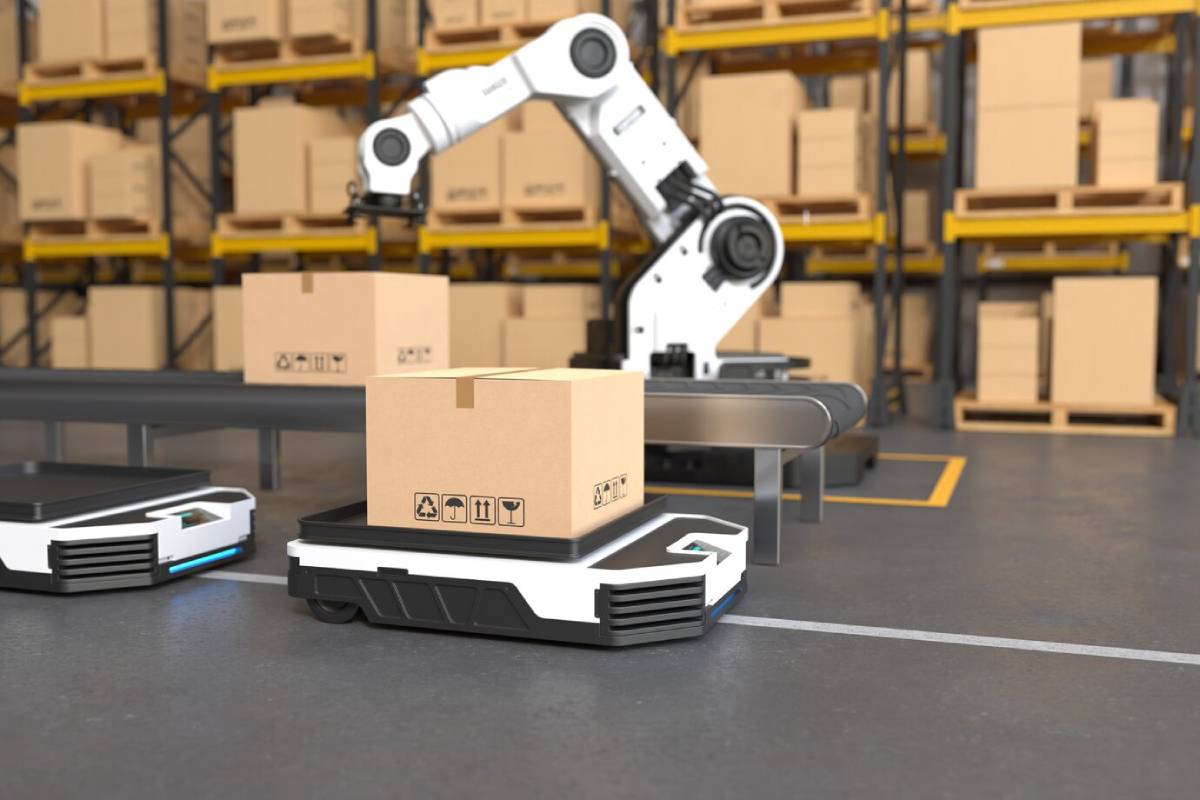
Implementing AI for Warehouse Management: Revolutionising Storage and Logistics
AI is now a key part of the supply chain and logistics. It’s not just a future idea; it’s happening today. Warehouse management is key to the supply chain. It is changing quickly as AI technologies are adopted. This change will boost efficiency, accuracy, and scalability. It will transform how warehouses work. In this blog, we explore how to use AI for warehouse management. We’ll look at its importance, benefits, and common mistakes to avoid.
The buzz around AI in warehouse management is not without reason. AI tools in warehouses can streamline operations, and storage optimisation techniques can also maximize space use. There is a huge potential for improvement. AI-driven logistics automation can cut down on human error and lower costs, making it a smart investment for businesses that want to stay competitive.
Key Benefits
Enhancing Operational Efficiency

A key benefit of using AI in warehouse management is better operational efficiency. AI systems handle large data quickly, helping warehouse managers make fast, smart choices. AI algorithms can predict demand patterns, which helps manage inventory better and reduces stockouts and overstocking.
Storage Optimization
Maximising storage space is a perennial challenge in warehouse management. AI tools can check product size and weight and help find the best way to store items efficiently. This maximises space and speeds up retrieval, reducing order fulfilment time.
Improved Accuracy and Reduced Errors
Human error is a big worry in warehouses. It can cause misplaced items, wrong shipments, and inventory issues. AI systems with machine learning can automate tasks like picking and sorting. They do this with great accuracy. This lowers the chance of mistakes. It also makes sure products reach customers correctly and on time.
Cost Reduction
AI can automate many warehouse tasks, saving a lot of money. AI systems can greatly lower labour costs. They handle repetitive and time-consuming tasks. AI can predict needs, which helps optimise resource use and reduce costs.
Real-life Applications and Data-backed Insights
AI in warehouse management is more than just a theory. It’s a real practice for many businesses. Amazon’s fulfilment centres are famous for using AI technology. They use robotic picking systems and AI for inventory management. Amazon’s systems allow for fast delivery and keep customers very happy.
Data-backed insights further underscore the benefits of AI in warehouse management. A McKinsey report shows that companies using AI in their supply chains cut logistics costs by 15% and improved inventory levels by 35%. These statistics highlight the tangible benefits of AI integration in warehouse management.
Additional Expert Tips & Common Mistakes to Avoid
Best Practices for Implementing AI
Implementing AI in warehouse management requires a strategic approach to ensure success. Here are some expert tips to consider:
- Start Small: Launch a pilot project to test how well AI tools work in a controlled setting. This allows for adjustments and fine-tuning before a full-scale implementation.
- Invest in Training: Help your team learn how to use AI systems. Training programmes can help employees understand how to leverage AI tools effectively.
- Data Quality is Key: AI systems use high-quality data to function optimally. Make sure your data collection is strong and clean, and correct.
- Work with AI Experts: Teaming up with AI specialists offers great insights and support during implementation, helping you maximise your AI investment.
Common Mistakes to Avoid
AI offers many benefits, but businesses should watch out for common pitfalls:
- Overlooking Change Management: Implementing AI involves significant changes to existing processes. Not managing this change well can cause employees to resist. This can hurt the success of AI initiatives.
- Neglecting Scalability: Ensure your AI solutions can grow with your business needs. Investing in rigid systems can limit future growth opportunities.
- Neglecting Cybersecurity: As warehouses become more connected, the risk of cyber threats increases. Implement robust cybersecurity measures to protect your AI systems and data.
Advanced Insights
Leveraging AI for Predictive Maintenance
AI offers more than immediate gains in warehouse operations. Businesses can also use it for predictive maintenance. AI analyzes equipment data to predict maintenance needs, helping reduce downtime and extend asset lifespan.
Integrating AI with IoT
AI and the Internet of Things are teaming up to revolutionise warehouse management. IoT devices deliver real-time insights into the heartbeat of operations. They keep a watchful eye on temperature, humidity, and equipment performance. AI explores this data, improving conditions and increasing efficiency like never before.
Exploring AI-Driven Robotics

AI-driven robotics is revolutionising warehouse management. These intelligent machines can pick, pack, and sort with impressive speed and precision. Efficiency soars while human workers enjoy reduced physical strain, creating a symbiotic relationship. Welcome to the future of logistics! Here, technology helps us, and productivity soars.
Conclusion: Implementing AI for Warehouse Management
AI is now common in warehouse management. This change comes as the supply chain and logistics industry grows. AI offers significant benefits. It boosts efficiency and accuracy. It also cuts costs and improves customer satisfaction. These advantages are too significant to overlook. Businesses can successfully add AI to their warehouse operations. They just need a smart strategy and to avoid common mistakes. This helps them gain an edge over competitors.
The time to act is for businesses looking to embark on this journey. Begin by assessing your warehouse operations. Look for areas where AI could help improve efficiency. Collaborate with AI experts and invest in training to ensure a smooth transition. As you use AI technologies, watch for new trends and advances. This helps you stay ahead.
In summary, the future of warehouse management is in smart AI integration. Businesses can use this technology to boost their operations. It also helps them prepare for lasting success in the fast-changing supply chain and logistics world. Are you ready to take the leap into the future of warehouse management with AI?